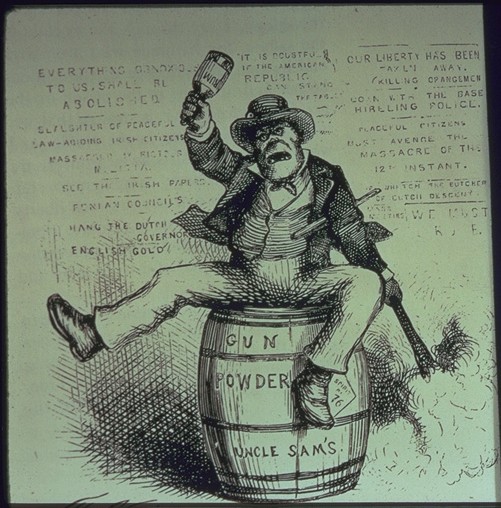 |
| A damaged petroglyph at Volcanic Tablelands (Greg Haverstock BLM) NBCNews.com |
The looters used power saws to cut away at least five petrogyphs (one of which they broke and left in the parking lot), and deface a number of others. They would have had to use at least a portable generator and a ladder to get get at the petroglyphs. This is more than casual vandalism. The effort suggests it was done for money.
Greg Haverstock, the BLM archaeologist at Bishop, notes the monetary value of the panels at $500-$1,500 a piece. That's not much given the effort and risk. I wonder if they had a guaranteed buyer to make it worthwhile--an antiquities collector who will now own something they can't show off too much.
Just from the point of view of an archaeologist, I don't get the antiquity-collecting mentality. But looters and collectors do strike a chord with the US public. Obviously there is the populist appeal of being "jes' plain folks" against "pointy-headed intellectuals," an argument that always plays well in the US. But the needs that drive looting also make sense to a public marinaded in the assumptions of capitalism.
Reductionism and context
The idea that complex phenomena (like, well, human history) can only be understood when reduced to a pile of constituent physical bits is an ingrained one. When archaeologists, anthropologists, and historians talk about "context," the usual response is a polite but blank look.
In this vandalism case, however, the notion of context is pretty easy to understand. The petroglyphs formed a physical unit--the looters had to break them to get them out. Most people get that some meaning has been lost. In other cases, where there is not a physical connection that needs to be physically destroyed, people have a harder time seeing the need to maintain context (or "provenience").
Commodification
The second intuitive appeal here is that nearly everything is reducible to a thing that can be alienated--bought and sold. The value of, in this case, Native American cultural heritage is a financial one. Even in those rare cases where looters are caught and prosecuted, the assessment of damages is a financial assessment. In this society it has to be, I suppose, but it does make for strange arguments. How much money is the knowledge that was destroyed worth (awkward since so since we have no idea what that knowledge potentially was)? How much money is the anguish over the violation of an ancestral burial worth?
Related to this is Americans' instinctive distrust of the commons. The idea that there are things out there that are worth money but are not owned by anyone disturbs many people. Looters on federal or state land are seen, not as stealing from the public trust, but as individuals taking on the government. The conversion of the commons to private property seems almost righteous.
However the petrolyphs have a sacred character, and this was a act of desecration. I think many Americans (although obviously not all) are uneasy with too much mixing of commerce and religion. So there is a sense that not everything should be commodified, which might contribute to some of the outrage over the vandalism.
Fetishism
Looted artifacts, these now-isolated commodified objects, have a meaning that goes beyond their use-value. There is an almost erotic aspect to how this is expressed--touching, feeling, holding the past. Ric Savage1, the former wrestler who stars in Spike TV's reality show American
“Anywhere anything ever happened, there is going to be something in the ground,” Savage explains. “Relic hunting depends on the hunter and what they are interested in and looking for. I look for historical artifacts. Modern coins, jewelry — that’s more scavenging. I like touching history.”
But critics don’t like Savage touching history. The Society of American Archaeology has criticized relic hunters for promoting illegal looting. [Huus 2012]Of course the driving force behind the antiquities market is not the urge to "touch the past," but the urge to own the past. And it's not even "the past." It is a single isolated object that happens to be old. There are people, many people, who feel they cannot appreciate the past (or other cultures) unless they can own it. If it isn't theirs, they can't feel any connection with it or have any understanding of it. The physical act of holding and owning an object satisfies some yearning for connection. But of course it doesn't--that's why people have collections of artifacts.
When the only pleasure is ownership, the urge to consume is never satisfied.
1Sorry for the juxtaposition of "erotic" and "Ric Savage."
UPDATE (2/2/13). The petroglyphs have been recovered, due to an anonymous tip. Whoever left the tip did not give their name, giving up the chance for a $9000 reward. This suggests the looters themselves left the tip. They were pbviously unable to sell the petroglyphs. Unfortunately they remain at large.
---------------------------------------------------------
References
Hoekstra, Dave
2012 "Relic hunter Ric Savage finds his Navy Pier souvenir." Chicago Sun-Times, March 20, 2012.
http://www.suntimes.com/entertainment/11422670-421/relic-hunter-ric-savage-finds-his-navy-pier-souvenir.html (last viewed Nov 21, 2012)
Huus, Kari
2012 "Theft of sacred rock drawings stuns California tribe, federal officials." NBC News, March 20, 2012. http://usnews.nbcnews.com/_news/2012/11/19/15284584-theft-of-sacred-rock-drawings-stuns-california-tribe-federal-officials?lite (last viewed Nov 21, 2012)
Sahagun, Louis
2012 "Petroglyph thefts near Bishop stun federal authorities, Paiutes." Los Angeles Times, November 18, 2012, http://www.latimes.com/news/local/la-me-petroglyphs-theft-20121119,0,6886011.story (last viewed Nov 21, 2012)


